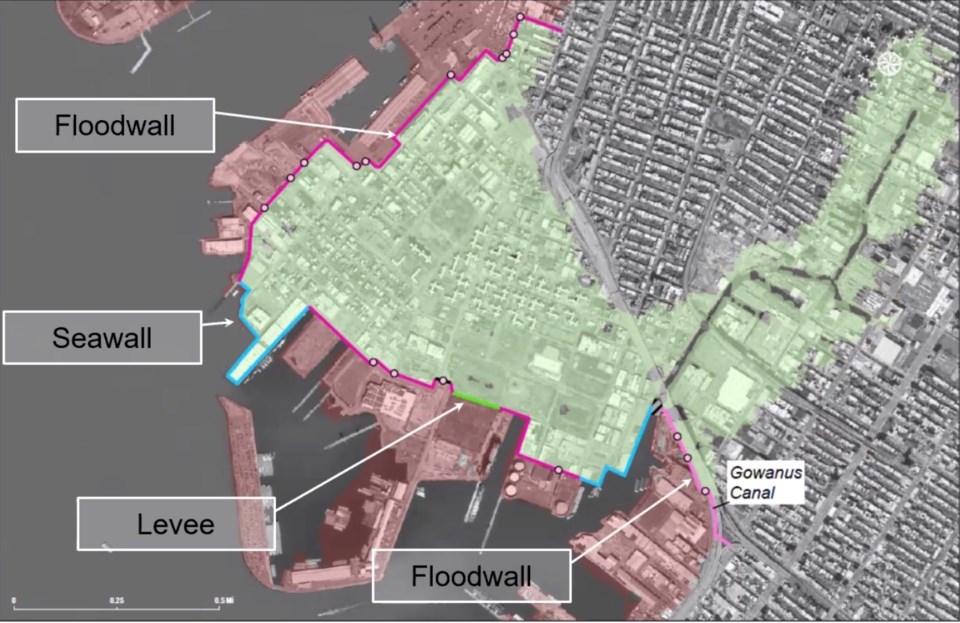The deadline to comment on the U.S. Army Corps of Engineers’ $52.7 billion flood prevention plan has been extended to March 31, reports The Brooklyn Eagle. The extension will grant Brooklyn neighbors just a few extra days to absorb the 500-plus-page flood protection proposal.
The plan is known as HATS, or The Harbor and Tributaries Focus Area Feasibility Study, and would prevent flooding with storm-surge gates, 17-foot walls, levees, and elevated walkways.
The construction, after design and environmental approvals, could start in 2030 and be completed in 2044, if approved. With the plan, there are expected dramatic changes to Brooklyn’s waterfront neighborhoods including Greenpoint, Red Hook, Gowanus and Coney Island.
Rep. Dan Goldman and Brooklyn Community Board 6 hosted a Zoom town hall on Monday in coordination with USACE Project Manager Bryce Wisemiller to present the plan for the Red Hook and Gowanus area. There were 263 locals in virtual attendance awaiting a discussion regarding plan Alternative 3B. The plan includes storm surge barriers on Gowanus, Newtown and Flushing creeks in Brooklyn and Queens, along with retractable surge gates and shore-based measures in some areas.
“Alt 3B is the tentatively selected plan,” Wisemiller said. “It generates the greatest net benefits with the least adverse flooding elsewhere, and it dovetails with other city projects. The plan is very preliminary and very conceptual, and there will be components that will need to be put into the plan that aren’t there now, so it’s really much of a framework.”
Some participants were concerned about restricted waterfront access and the exacerbation of the area’s sewage problems and toxic sites. While others shared skepticism regarding building hard walls and gates where natural solutions might be more ecologically sound.
“Two things are clear: the public engagement needs to be dramatically improved and while the deadline for comments was extended, I think people will still need more time to wrap their heads around a proposal this massive. Getting this right is key,” stated Assembly member Jo Anne Simon. “Participant's questions were well thought out and expressed, which bodes well for future engagement,’ she continued.
While final plans are still being fleshed out, most if not all participants seemed to understand the urgency of tackling Brooklyn flooding. Climate change is not going away, sea level rise is not going to stop, and it is crucial for New Yorkers to understand that storm surges are part of our future.
“The effects of climate change are a daunting challenge for our communities, as the devastating storms of the past decade have demonstrated,” said Michael Racioppo. Racioppo is the district manager at Brooklyn Community Board 6.
“We asked for further study of resiliency efforts in 2018. We were glad to collaborate with Representative Goldman on last night’s town hall, attended by over 250 people with a wide range of concerns. We hope the USACE’s extension of the comment period will give more CB6 residents a chance to be heard.”




